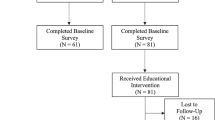Abstract
Despite the fact that the length of medical school training has remained stable for many years, the expectations of graduating medical students (and the schools that train them) continue to increase. In this Reflection, the authors discuss motives for educational inflation and suggest that these are likely innocent, well-intentioned, and subconscious—and include both a propensity to increase expectations of ourselves and others over time, and a reluctance to reduce training content and expectations. They then discuss potential risks of educational inflation, including reduced emphasis on core knowledge and clinical skills, and adverse effects on the emotional, psychological, and financial wellbeing of students. While acknowledging the need to change curricula to improve learning and clinical outcomes, the authors proffer that it is naïve to assume that we can inflate educational expectations at no additional cost. They suggest that before implementing and/or mandating change, we should consider of all the costs that medical schools and students might incur, including opportunity costs and the impact on the emotional and financial wellbeing of students. They propose a cost-effectiveness framework for medical education and advocate prioritization of interventions that improve learning outcomes with no additional costs or are cost-saving without adversely impacting learning outcomes. When there is an additional cost for improved learning outcomes or a decline in learning outcomes as a result of cost saving interventions, they suggest careful consideration and justification of this trade-off. And when there are neither improved learning outcomes nor cost savings they recommend resisting the urge to change.


Similar content being viewed by others
References
Alam, U., Asghar, O., Khan, S. Q., Hayat, S., & Malik, R. A. (2010). Cardiac auscultation: an essential clinical skill in decline. British Journal of Cardiololgy, 17, 8–10.
Barsuk, J. H., Cohen, E. R., Feinglass, J., McGaghie, W. C., & Wayne, D. B. (2009). Use of simulation-based education to reduce catheter-related bloodstream infections. Archives of Internal Medicine, 169, 1420–1423.
Brown, D. K. (2001). The social sources of educational credentialism: status cultures, labor markets, and organizations. Sociology of Education, 74, 19–34.
Cook, D. A., Brydges, R., Zendejas, B., Hamstra, S. J., & Hatala, R. (2013). Technology-enhanced simulation to assess health professionals: a systematic review of validity evidence, research methods, and reporting quality. Academic Medicine, 88, 872–883.
“Credentialism.” International Encyclopedia of the Social Sciences. 2008. Encyclopedia.com. <http://www.encyclopedia.com>.
Derber, C., Schwartz, W. A., & Magrass, Y. (1990). Power in the highest degree: Professionals and the Rise of a New Mandarin Order. New York, NY: Oxford University Press.
Dyrbye, L. N., West, C. P., Satele, D., Boone, S., Tan, L., Sloan, J., et al. (2014). Burnout among U.S. medical students, residents, and early career physicians relative to the general U.S. population. Academic Medicine, 89, 443–451.
Eidelman, S., Crandall, C. S., & Pattershall, J. (2009). The existence bias. Journal of Personality and Social Psychology, 97, 765–775.
Fazio, S. B., Papp, K. K., Torre, D. M., & Defer, T. M. (2013). Grade inflation in the internal medicine clerkship: a national survey. Teaching and Learning in Medicine, 25, 71–76.
Hojat, M., Gonnella, J. S., Erdmann, J. B., & Veloski, J. J. (1996). The fate of medical students with different levels of knowledge: Are the basic medical sciences relevant to physician competence? Advances in Health Science Education, 1, 179–196.
https://www.afmc.ca/accreditation/committee-accreditation-canadian-medical-schools-cacms.
Jackson, E. R., Shanafelt, T. D., Hasan, O., Satele, D. V., & Dyrbye, L. N. (2016). Burnout and alcohol abuse/dependence among U.S. medical students. Academic Medicine. doi:10.1097/ACM.0000000000001138.
Kaba, A., Wishart, I., Fraser, K., Coderre, S., & McLaughlin, K. (2016). Are we at risk of groupthink in our approach to teamwork interventions in healthcare? Medical Education, 50, 400–408.
Kahneman, D., Knetsch, J., & Thaler, R. (1990). Experimental test of the endowment effect and the Coase theorem. Journal of Political Economy, 98, 1325–1348.
Kahneman, D., & Tversky, A. (1984). Choices, values, and frames. American Psychologist, 39, 341–350.
Mangione, S., & Nieman, L. Z. (1997). Cardiac auscultatory skills of internal medicine and family practice trainees: a comparison of diagnostic proficiency. Journal of the American Medical Association, 278, 717–722.
Mangione, S., & Nieman, L. Z. (1999). Pulmonary auscultatory skills during training in internal medicine and family practice. American Journal of Respiratory Critical Care Medicine, 159, 1–6.
Palmer, S., & Raftery, J. (1999). Economic notes: Opportunity cost. British Medical Journal, 318, 1551–1552.
Raymond, J. R., Sr., Kerschner, J. E., Hueston, W. J., & Maurana, C. A. (2015). The merits and challenges of three-year medical school curricula: Time for an evidence-based discussion. Academic Medicine, 90, 1318–1323.
Reeves, S., Perrier, L., Goldman, J., Freeth, D., & Zwarenstein, M. (2013). Interprofessional education: effects on professional practice and healthcare outcomes (update). Cochrane Database of Systematic Reviews, 3, CD002213.
Rogers, E. M. (2003). Diffusion of innovations (5th ed.). New York, NY: Free Press.
Shon, J. (2008). More is better: An investigation of monotonicity assumption in economics. http://www.math.uchicago.edu/~may/VIGRE/VIGRE2008/REUPapers/Shon.pdf.
Song, F., Parekh, S., Hooper, L., Loke, Y. K., Ryder, J., Sutton, A. J., et al. (2010). Dissemination and publication of research findings: An updated review of related biases. Health Technology Assessment, 14(iii, ix-xi), 1–193.
Starmer, A. J., Spector, N. D., Srivastava, R., West, D. C., Rosenbluth, G., Allen, A. D., et al. (2014). Changes in medical errors after implementation of a handoff program. New England Journal of Medicine, 371, 1803–1812.
Torgerson, D., & Raftery, J. (1999). Economics notes: measuring outcomes in economic evaluations. British Medical Journal, 318, 1413.
Veale, P., Carson, J., Coderre, S., Woloschuk, W., Wright, B., & McLaughlin, K. (2014). Filling in the gaps of clerkship with a comprehensive clinical skills curriculum. Advances in Health Science Education, 19, 699–707.
Author information
Authors and Affiliations
Corresponding author
Rights and permissions
About this article
Cite this article
Cusano, R., Busche, K., Coderre, S. et al. Weighing the cost of educational inflation in undergraduate medical education. Adv in Health Sci Educ 22, 789–796 (2017). https://doi.org/10.1007/s10459-016-9708-3
Received:
Accepted:
Published:
Issue Date:
DOI: https://doi.org/10.1007/s10459-016-9708-3



